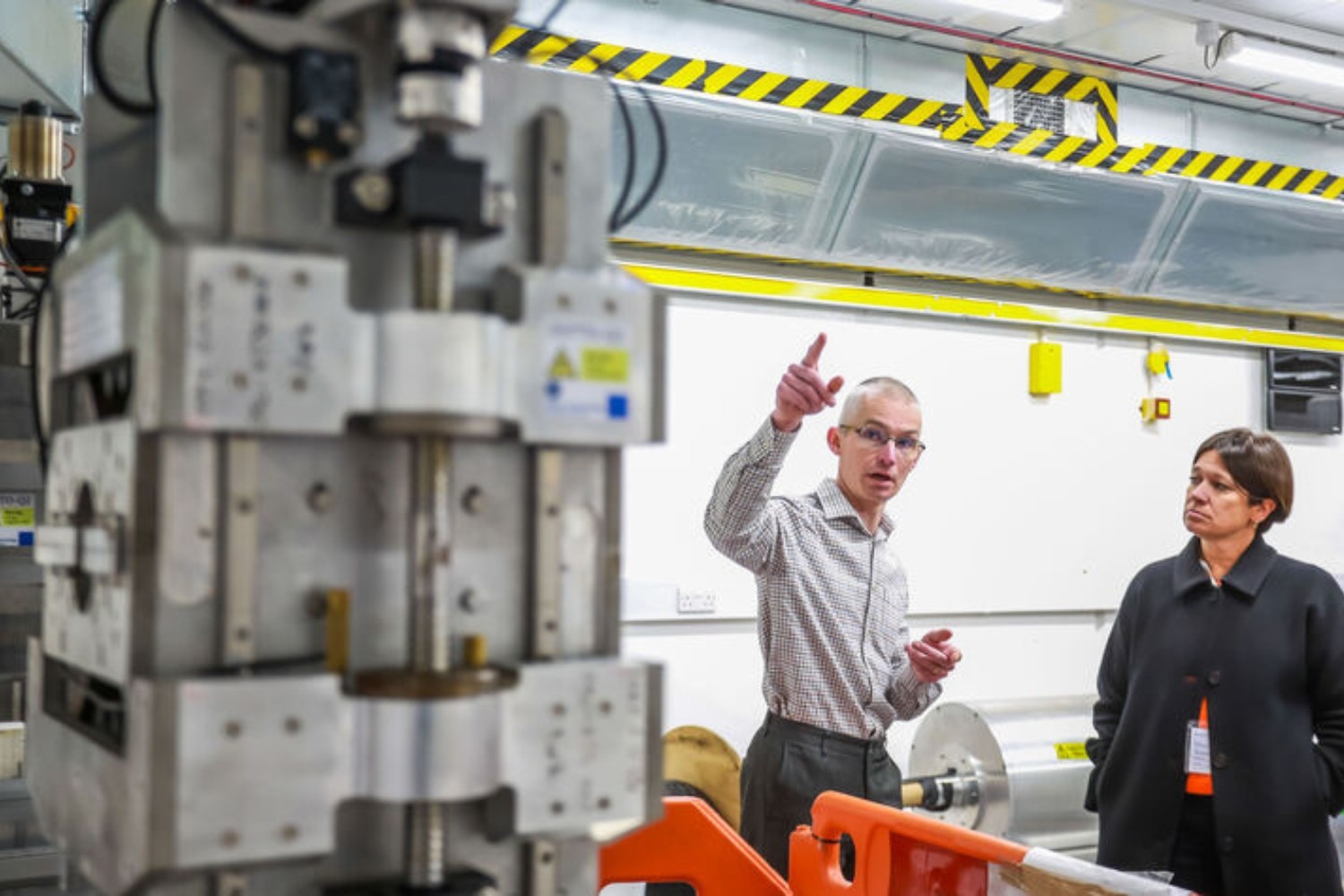[ad_1]
Backed by a £250,000 Knowledge Asset Grant from the UK Government Office of Technology Transfer, the project will further develop the Zero Power Tunable Optics (ZEPTO) magnet.
It marks an exciting step towards more sustainable particle accelerator technologies and could transform how these powerful machines are designed and built in the future.
Impact on sustainable technology
Particle accelerators are essential to the research conducted at the Science and Technology Facilities Council (STFC).
They contribute to major facilities such as the Diamond Light Source at Rutherford Appleton Laboratory in Oxfordshire and the Large Hadron Collider (LHC) at CERN.
However, the high power consumption of traditional quadrupole magnets poses a significant environmental challenge.
The ZEPTO magnet, a permanent magnet that does not require a constant power supply, offers a sustainable alternative.
By reducing electricity consumption, ZEPTO magnets can significantly lower the environmental impact of accelerator science.
Funding for future development
Part of the ZEPTO team from STFC’s ASTeC and Technology departments. Credit: STFC
The grant will support the build and testing of the next iteration of the ZEPTO magnet, ready for installation on the Compact Linear Accelerator for Research and Applications (CLARA) accelerator.
CLARA is located at STFC Daresbury Laboratory, at Sci-Tech Daresbury in the Liverpool City Region.
An existing tunable magnet that serves to steer and guide the beam around the accelerator will be replaced by a ZEPTO magnet.
The ZEPTO magnet will perform the same job at a fraction of the power without sacrificing precision or inhibiting beam performance.
STFC’s scientists have refined the process to produce a result like none that have gone before it, addressing critical challenges such as:
- ease of assembly
- field quality
- magnetic centre stability
The build itself presented problems when battling a magnetic field strength akin to moving a car within a hair’s width.
However, the team has overcome this and are one step closer to delivering this significant milestone by November 2025.
Magnetic attraction
Developed in collaboration with CERN, the innovative ZEPTO magnet design involves positioning opposing magnetic poles in a diamond formation to create a constant zero-field centre, eliminating the need for a continuous power supply.
The successful development and implementation of ZEPTO magnets on CLARA could revolutionise the field of particle accelerator technology, making it more sustainable and environmentally friendly.
Untapped potential
This funding is enabling preparation for the ZEPTO magnet to become market ready, with expectations that opportunities for commercial licencing will soon follow.
Ben Shepherd, Head of the Magnetics and Radiation Sources Group, expressed his excitement about the grant’s potential:
We’ve been developing our invention for a few years now.
This grant is a great opportunity to take our work to the next level.
I’m looking forward to working with the team to get this magnet designed, built and tested in the next few months.
I’m optimistic that this funding could give ZEPTO the chance to be incorporated into the early planning phases for future particle accelerators with its unique combination of low-energy functioning and easy adjustability that alternatives struggle to balance.
Top image: A ZEPTO magnet displayed and being presented by Ben Shepherd, Head of the Magnetics and Radiation Sources Group. Credit: STFC
[ad_2]
Source link

Leave a Reply